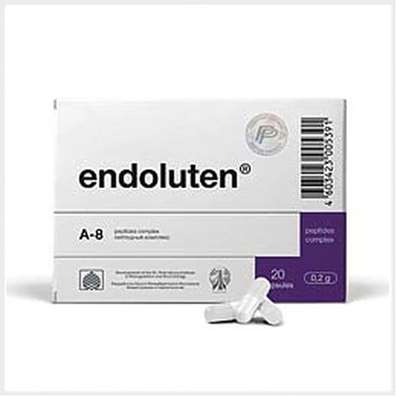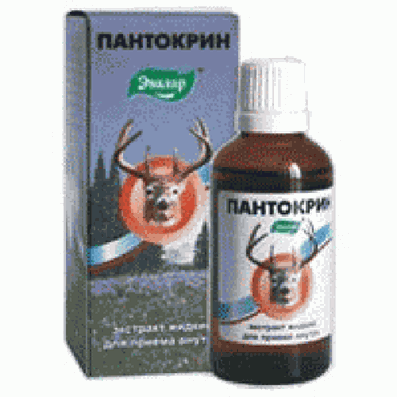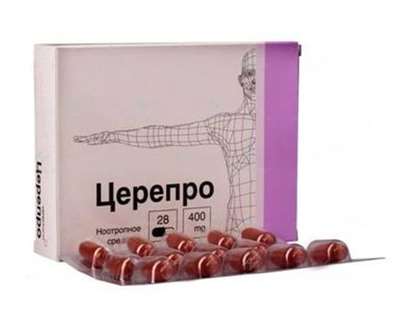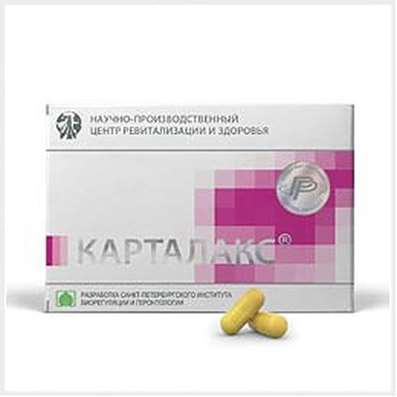Instruction for use: Risperidone
I want this, give me price
The Latin name of the substance Risperidone
Risperidonum (genus. Risperidoni)
Chemical name
3- [2- [4- (6-Fluoro-1,2-benzisoxazol-3-yl) piperidino] ethyl] -6,7,8,9-tetrahydro-2-methyl-4H-pyrido [1,2- a] pyrimidin-4-one
Gross formula
C23H27FN4O2
Pharmacological group:
Neuroleptics
The nosological classification (ICD-10)
F00 Dementia in Alzheimer's disease (G30 +): Alzheimer's dementia; Alzheimer's dementia; Dementia in Alzheimer's disease
F06.0 Organic hallucinosis: Paranoid-hallucinatory state; Psychotic disorder with a predominance of hallucinatory-paranoid symptoms and disorders of thinking; Chronic verbal hallucinosis
F06.2 Organic delusional [schizophreniform-like] disorder: Chronic paranoid conditions; Organic Delusional Disorder
F20 Schizophrenia: Schizophrenic conditions; Exacerbation of schizophrenia; Schizophrenia; Chronic schizophrenia; Dementia praecox; Bleuler's disease; Psychotic discordant; Dementia early; The febrile form of schizophrenia; Chronic schizophrenic disorder; Psychosis of the schizophrenic type; Acute form of schizophrenia; Acute schizophrenic disorder; Cerebral Organic Insufficiency in Schizophrenia; Acute attack of schizophrenia; Schizophrenic psychosis; Acute schizophrenia; Sluggish schizophrenia; Sluggish schizophrenia with apathoabulic disorders; Acute stage of schizophrenia with excitation
F20.1 Gebefrenic schizophrenia: Gebefrenia; Gebefrenic syndrome; Heboid states;Gebefrenic schizophrenia
F22 Chronic Delusional Disorders: Delusional Chronic Disorder; Delusional Disorders; Delusional syndrome; Paranoia; Chronic affective-delirious states
F25 Schizoaffective disorders: Schizoaffective disorders; Schizoaffective psychosis; Schizoaffective disorder
F29 Inorganic psychosis, unspecified: Childhood psychoses; Psychomotor agitation in psychoses; Hallucinatory-delusional disorders; Hallucinatory-delusional syndrome; Intoxication psychosis; Manic-delusional disorders; Manic chronic psychosis; Manic psychosis; Acute psychosis; paranoid psychosis; Paranoid psychosis; Subacute psychosis; Presenile psychosis; Psychosis; Intoxication psychosis; Psychosis is paranoid; Psychosis in children; Reactive psychosis; Chronic psychosis; Chronic hallucinatory psychosis; Chronic psychosis; Chronic psychotic disorder; Schizophrenic psychosis
F30 Manic episode: Manic-depressive disorder; Manic agitation; Manic state; Manic conditions; A manic condition; Manic syndrome; Acute manic syndrome
F32 Depressive episode: Adynamic subdepression; Astheno-adynamic subdepressive states; Asthenodepressive disorder; Astheno-depressive disorder; Asthenodepressive state; Astheno-depressive state; Major Depressive Disorder; Vyaloapatichesky depression with retardation; Double depression; Depressive pseudodement; Depressive illness; Depressive mood disorder; Depressive disorder; Depressive mood disorder; Depressive state; Depressive disorders; Depressive syndrome; Depressive syndrome larviated; Depressive syndrome with psychoses; Depressed masks; Depression; Depression Depletion; Depression with the phenomena of inhibition within the framework of cyclothymia; Depression is smiling; Involutional depression; Involutionary melancholy; Involutional depression; Manic-depressive disorder; Masked Depression; Melancholic Attack; Neurotic depression; Neurotic depression; Shallow Depression; Organic depression; Organic depressive syndrome; Simple depression; Simple melancholic syndrome; Psychogenic depression; Reactive depression; Reactive depression with moderate psychopathological symptoms; Reactive depressive states; Reactive depression; Recurrent depression; Seasonal depressive syndrome; Severostatic depression; Senile Depression; Senile Depression; Symptomatic Depression; Somatogenic depression; Cyclotymic depression; Exogenous Depression; Endogenous depression; Endogenous Depressive Conditions; Endogenous Depression; Endogenous depressive syndrome
F42 Obsessive-compulsive disorder: Obsessive-compulsive syndrome; Obsessive compulsive states; Obsessive-compulsive syndrome; The obsession syndrome; The obsession neurosis; Obsessive-compulsive neurosis; Obsessions
R44.3 Hallucinations, unspecified: Hallucinatory conditions; Hallucinations; Acute hallucinatory state; Chronic hallucinatory conditions
R45.6 Physical aggressiveness: Aggressiveness; Aggressive states; Aggressive state; Aggression; Aggressive behavior; Autoaggression
CAS Code
106266-06-2
Characteristics of the substance Risperidone
Benzisoxazole derivative. White with a beige shade powder, almost insoluble in water, easily soluble in methylene chloride, methanol and 0.1N. hydrochloric acid. Molecular weight 410.49.
Pharmacology
Pharmacological action - antipsychotic, neuroleptic.
Selectively blocks (characterized by high affinity) 5-HT2-serotonergic, D2-dopaminergic, alpha1-adrenergic, to a lesser extent, alpha2-adrenergic and histamine H1 receptors in the CNS. Has a weakly expressed affinity for 5-HT1A-, 5-HT1C-, 5-HT1D-serotonergic, D1-dopaminergic receptors and haloperidol-sensitive sections of sigma binding, insignificant affinity for 5-HT1B and 5-HT3 receptors. It does not have the ability to interact with m-cholinergic and beta1, beta2-adrenergic receptors.
Has antipsychotic, sedative, antiemetic and hypothermic effects. Antipsychotic effect is due to blockade of D2-dopaminergic receptors of mesolimbic and mesocortical systems. Sedative action is a consequence of blockade of adrenoreceptors of the reticular formation of the brainstem, antiemetic - blockade of D2-dopaminergic receptors in the trigger zone of the vomiting center, hypothermic - blockade of dopamine receptors of the hypothalamus. Suppresses delirium, hallucinations, reduces the feeling of fear, weakens aggressiveness. To a lesser extent than the classical antipsychotics, inhibits motor activity, induces catalepsy and rarely causes the appearance of extrapyramidal symptoms. May cause hyperprolactinemia, hypersecretion of ADH. Changes the structure of sleep, strengthens a deep slow wave sleep (antiserotoninovoe action). Blocking alpha-adrenoreceptors, causes dose-dependent hypotension and reflex tachycardia. Has a potential pro-arrhythmic effect, because lengthens the QT interval. There are data on the decrease or suppression of salivary secretion by risperidone, which contributes to the development of caries, periodontal diseases and candidiasis of the oral cavity; however, in some patients hypersalivation was noted.
After oral administration, it is quickly and completely absorbed, the speed and completeness of absorption are not dependent on food intake. The relative bioavailability when taking tablets as compared to the solution is 94%, the absolute bioavailability with oral administration is 70%. Cmax is achieved in 1-2 hours. It is quickly and well distributed in the body. The volume of distribution is 1-2 l / kg. Extensively metabolized in the liver with the participation of the cytochrome P450 isoenzyme CYP2D6. The main pathway of biotransformation is hydroxylation to form the main active metabolite of 9-hydroxy-risperidone (spectrum and strength of action, as well as safety parameters comparable to risperidone). Another way of biotransformation, having the minimum value is N-dealkylation. The reaction of hydroxylation of risperidone is genetically determined (up to 6-8% of representatives of the white race and a very small number of representatives of the Asian race are characterized by either lack or very low metabolic activity). Therefore, in patients with a high level of metabolism, plasma concentrations of risperidone are lower, and 9-hydroxy-risperidone is higher (C max of risperidone is achieved after 3 hours, 9-hydroxy-risperidone - after 17 hours) compared with those who have low biotransformation extensiveness. However, the status of the metabolic phenotype is not of great clinical significance, the main metabolite has a specific activity. Binding to plasma proteins is 88% (risperidone) and 77% (9-hydroxy-risperidone). With high and low T1 / 2 metabolism, risperidone and 9-hydroxy-risperidone are respectively 3 and 21 hours, 20 and 30 hours. Equilibrium concentrations of risperidone are achieved within 1 or 5 days against a background of high and low biotransformation rate, respectively. In extensive metabolo-lenses, stable concentrations of 9-hydroxy-risperidone are recorded after 5-6 days. Risperidone and 9-hydroxy-risperidone form a pharmacologically active fraction, the stable concentration of which is reached after 5-6 days, and T1 / 2 is 20 hours. It is excreted mainly by kidneys (70%) and faeces (15%).
If the kidney function is of medium and severe severity, excretion of the active fraction can be reduced by 60% (correction of the dosing regimen is required). In elderly patients, clearance decreases and T1 / 2 increases (dose modification is required). Risperidone and its active metabolite penetrate into breast milk and are detected in it at concentrations higher than or comparable to plasma levels (according to animal studies).
In studies in vitro and in animals, no mutagenic properties were found. The occurrence of breast cancer, pituitary adenomas and pancreatic islet cell tumors was noted in mice and rats receiving risperidone at doses 2.4 and 9.4 times, respectively, exceeding the MPD for 18-25 months. In dogs at doses 0.6-10 times higher than MPD, motility and sperm concentration decreased, dose-dependent plasma testosterone level decreased. In animal trials, teratogenicity was not detected.
Application of the substance Risperidone
Schizophrenia (acute and chronic) and other psychotic conditions with a predominance of productive (delirium, hallucinations, aggressiveness), negative (blunted affect, emotional and social detachment, poor speech) or affective (anxious depression) symptoms; Behavioral disorders in the presence of dementia (with the appearance of symptoms of aggression, activity disorders or psychotic symptoms) or mental retardation or decreased intelligence (with dominance of destructive behavior); mania in bipolar disorders (auxiliary therapy).
Contraindications
Hypersensitivity.
Restrictions on the use
Heart failure, myocardial infarction, AV blockade and other conduction disorders, cerebral circulation and / or liver and kidney function, breast cancer, hypovolemia, Parkinson's disease, epilepsy, pregnancy, breast-feeding, age under 15 (no experience) .
Application in pregnancy and lactation
During pregnancy, it is possible if the intended benefit to the mother exceeds the potential risk to the fetus.
The action category for fetus by FDA is C.
For the duration of treatment, breastfeeding should be discarded.
Side effects of the substance Risperidone
From the nervous system and sensory organs: sleep disturbance, incl. insomnia or drowsiness, increased excitability, fatigue, attention disturbance, anxiety, anxiety, headache, dizziness, extrapyramidal disorders (rigidity, hypokinesia, hypersalivation, akathisia, acute dystonia), tardive dyskinesia, neuroleptic malignant syndrome, thermoregulatory disorders, convulsive seizures, stroke (in predisposed elderly patients), blurred vision.
From the cardiovascular system and blood (hematopoiesis, hemostasis): orthostatic hypotension, reflex tachycardia, arterial hypertension, neutro- and thrombopenia, thrombocytopenic purpura.
On the part of the digestive tract: nausea, vomiting, dyspeptic phenomena, abdominal pain, constipation, increased level of hepatic transaminases.
On the part of the genitourinary system: dysmenorrhea, amenorrhea, impotence, erectile dysfunction and ejaculation, anorgasmia, decreased libido, priapism, polyuria, urinary incontinence, edema.
Allergic reactions: skin rash, angioedema.
Other: rhinitis, galactorrhea, gynecomastia, weight gain, hypervolemia (due to polydipsia or the syndrome of inappropriate secretion of ADH), hyperglycemia (in patients with diabetes mellitus).
Update of information
There are reports of rhabdomyolysis, which develops with risperidone treatment, and also occurs secondary to the development of malignant neuroleptic syndrome.
Interaction
Reduces the effect of levodopa and other dopamine agonists. Phenothiazines, tricyclic antidepressants, fluoxetine and beta-blockers can increase the concentration of risperidone in plasma. When used simultaneously with carbamazepine, other inducers of liver enzymes (including drugs metabolized with the participation of cytochrome P450 enzymes), the concentration of the active antipsychotic fraction (risperidone and active metabolite) in the blood plasma decreases (correction of its dose is required in case of withdrawal of these drugs) . With prolonged use of carbamazepine, the excretion of risperidone is increased, with prolonged administration of clozapine, it decreases. Benzodiazepines, alcohol and CNS suppressing agents increase sedation, dopamine receptor antagonists increase the risk of developing tardive dyskinesia. With the simultaneous administration of antihypertensive agents, the hypotensive effect of risperidone may be increased.
Overdose
Symptoms: increased sedation, drowsiness, tachycardia, arterial hypotension, extrapyramidal disorders, prolongation of the QT interval.
Treatment: gastric lavage, intake of activated carbon, laxatives, maintenance of airway patency, ECG monitoring, symptomatic and supportive therapy, constant medical supervision. When extrapyramidal symptoms appear - the introduction of anticholinergic drugs. The specific antidote is unknown.
Routes of administration
Inside, sublingually.
Precautions for the substance Risperidone
In the development of tardive dyskinesia should consider the withdrawal of risperidone, and with the appearance of neuroleptic malignant syndrome (hyperthermia, rigidity of muscles, impaired consciousness, increased levels of creatine phosphokinase) discontinue treatment. Do not use during work drivers of vehicles and people whose work is associated with increased concentration of attention and requires rapid motor reactions. During therapy, alcohol should be avoided. When switching to risperidone treatment, it is necessary to first cancel other antipsychotics. With caution combine with other drugs that affect the central nervous system. During treatment it is recommended to refrain from overeating due to the possibility of increasing body weight.

 Cart
Cart





